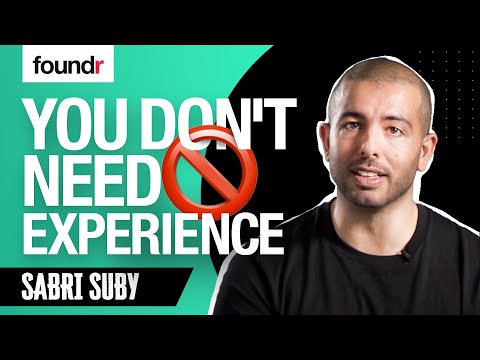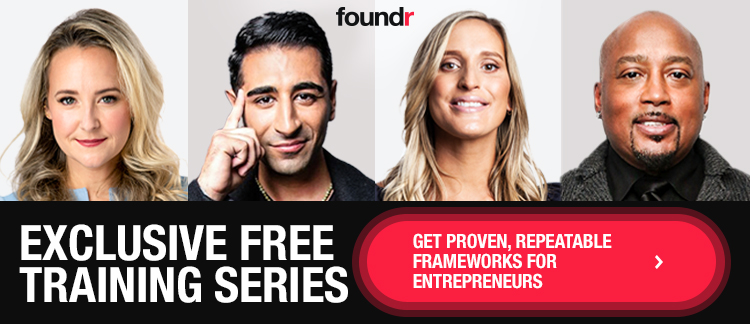Freelancing presents you with a series of fascinating juxtapositions. You’ll enjoy more independence than at any other point in your professional life, while also relying more on a network than ever before. You’ll be a lone wolf for much of the time, but will also be part of a thriving community of more than a billion freelancers around the globe.
Yes, freelancing involves an ambitious leap into the world of solo work. But it is one of the safest times to jump into freelancing. With better collaboration technology available and an increasing number of companies getting more comfortable with remote work arrangements, freelancing has gone from rogue to regular.
In fact, the number of freelancers is projected to increase by 65% in the next 5 years. And there’s never been a better time to join this thriving community.
Wondering How to Start Freelancing? Take It One Day at a Time.
Freelancing is one of those pursuits in life that must be experienced to be understood. Each time you encounter a new challenge and find an appropriate solution, you’re that much stronger. But you have to go through this process. If you were to airdrop into an established freelancer’s career, you’d be overwhelmed. There’d be invoices, networking meetings, and tax-related obligations.
In this way, your freelancing career is similar to starting a family. When an infant or fur baby comes into your home, there’s a long list of new skills and insights that you’ll acquire. Then you might have a second child or bring another pet into your home. Your prior knowledge will greatly serve you during this transition, and you’ll also master some new aspects of having a larger family.
Incremental learning is the best way to tackle these new and exciting parts of our lives. If you were to go from 0 to 60 and suddenly have a few children or pets in your home, the shock would be intense. In fact, burdened by all the things you didn’t know, you’d probably lack the awareness and mental clarity to naturally pick up on the necessary nuances as you go.
The 6 Key Steps to Launching Your Freelance Career
We’ll now outline the crucial steps that will not only help you manage your freelance career but prepare you to thrive within it. Because, when done right, freelancing can be one of the most fulfilling and exciting parts of your life.
1. Identify Your Purpose
As a wise Jedi Master once said, “Do or do not. There is no try.” To weather the challenges of freelancing and have the opportunity to set and achieve meaningful goals, you need to gravitate toward a purpose. In other words, what’s going to get you out of bed in the morning?
5 popular reasons for pursuing a freelance career are to:
- Challenge yourself
- Put your skills to the best use
- Partner with a wide range of clients
- Enjoy more autonomy
- Build a legacy you can be proud of
5 of the worst reason for pursuing a freelance career are to:
- Join all the other people doing it
- Spite your overbearing boss
- Work in your pajamas all day
- Make millions of dollars in your first year
- Have more time to watch TV
Once you’ve identified your driving purpose, you’ll have the momentum necessary to hit the ground running. You will have addressed the “why to start freelancing” question and can move on to “how to start freelancing.”
2. Identify Your Niche
Although freelancers are required to wear lots of hats while running their businesses, don’t mistake that as an indication that you should offer a grab bag of services. Instead, you need to figure out the unique set of talents you’re going to offer the world. Because the more specialized your business is, the more successful you’ll be.
Perhaps you’re not sure which service offerings will be most distinct and lucrative. Ask yourself:
- What am I best at doing?
- What are clients most likely to pay me for doing?
When the answer to those 2 questions is the same service, you’ve got yourself a business niche.
When you clearly promote your core offering to clients, it makes everyone’s lives easier. Your clients will appreciate it because they’ll be able to recognize right away if you’ll be able to meet their needs. And you’ll save time and hassle as well because there will be fewer irrelevant inquiries.
3. Figure Out Your Pricing
What are your services worth? And what do your rates need to be in order to be a successful freelancer? These can be tough questions to answer as you’re preparing to launch your business.
First, conduct an audit of your monthly budget to see how much money you’d need to make in order to survive as a freelancer. This amount should be enough to cover all necessities such as food, housing, health insurance, utilities, and other financial obligations. Also, you’ll need to account for the expenses related to your freelance business. These might include health insurance, better internet connection, and any laptops or other electronics required to complete jobs (the good news is that many of the things listed will count as business expenses on your taxes).
Next, figure out how much you’d need to bring in to enjoy a comfortable life. Not only would this amount cover the necessities listed earlier, but it’d provide room to travel, enjoy your hobbies, and upgrade your washing machine even though the current one still works perfectly.
Read more: Learn How to Be a Freelancer With Our Proven Process
The 2 amounts you’ve uncovered will serve as bumper lanes as you figure out your pricing. As long as your rates put you above the lowest amount, you’re in good shape. And if they nudge up toward the higher amount, all the better.
You can get an idea of the going rates within your industry by participating in Facebook groups dedicated to freelancing. Don’t hesitate to post questions specifically asking for rate suggestions. The freelance community is generally supportive of new members, so you can get valuable insights this way.
Another option is to visit the websites for other freelancers and check the rates listed. This technique can help you identify a general range of competitive prices.
Your goal should be to set prices that will place you higher than your “survival” amount each month. As long as the rates are sufficient to keep you motivated, you’re on the right track. Reassess the situation every few months to consider whether it’s time for a moderate rate increase.
4. Create Your Portfolio
In the freelance world, visibility of your past work is a requirement for future opportunities. So it’s imperative that you have an easily accessible portfolio to share with prospective clients.
As the experts from Wix explain:
These days, a professional online presence is an absolute must for designers and creatives. An online portfolio with spot-on website design is the modern-day version of a business card, a resume, and a project showcase all in one. After all, it’s the go-to place for all potential clients and employers looking to hire you. Creating a portfolio website is an opportunity to make something that shows off your skills and conveys your unique voice while looking just as crisp and professional as any of your other work. With the right tools, you can go beyond technological constraints and artistic compromises and build a powerful online presence.
Perhaps you use Wix to build and host your site. Or you might opt for another excellent platform, such as Squarespace, WordPress, Instagram, LinkedIn, or Bēhance. What matters is that your portfolio shines a favorable spotlight on why you should be hired and what clients can expect.
This process presents a chicken or egg conundrum for many entrepreneurs. You can’t build a portfolio because you don’t have any samples, and you can’t get jobs that would produce samples because you don’t have a portfolio.
Don’t worry. You can create your own mock samples to get the ball rolling. Another option is to reach out to trusted contacts in your network to see if they’ll pay you for some small jobs even though you don’t have a portfolio.
Should you think about taking on non-paying jobs in order to build up your portfolio? Maybe. But there are often other methods of generating quality work that doesn’t require you to forgo compensation.
Read more: What’s the Best Website Builder for Small Business?
5. Find Some Clients
Even the best freelancers will wither on the vine without clients. So you need to get out there and start finding people who are seeking the very skills you offer. Here are some tactics to make these matchups happen:
Take On Another Freelancer’s Overflow
As freelancers develop bigger and bigger networks, they inevitably reach a point where they must decline jobs due to lack of interest or lack of time.
This is where you come in. Contact established freelancers within your niche and offer to take on some of their overflow. You could either work out a subcontracting arrangement or simply have the freelancer refer clients directly over to you.
Tap Into Your Own Network
You have family, friends, and former coworkers, right? Many of them are likely involved with businesses that could benefit from your services. So don’t shy away from telling others about your new career and how you can help clients.
Kick things off by sending emails to individuals in your network who are most likely to either need your services or know somebody who does. Your message can be short and sweet. Just explain what it is that you do best and ask if they would please consider referring you to anyone who might need your help.
Use Cold Outreach
The early stages of your freelancing career will likely require some cold outreach. In fact, you’ll never outgrow this tactic. Even the most established freelancers sometimes reach out to businesses that they feel would be an ideal client.
Before sending an email to a potential client, do some research on their business. After scouring their website and getting a feel for their personality through their social media accounts, you’ll be able to speak their language and offer the most relevant solutions.
Join a Freelancing Platform
One of the best ways to score jobs early on (and build your portfolio in the process) is with a platform dedicated to freelancing. Popular examples include Upwork, Freelancer.com, Thumbtack, and Fiverr.
The main benefit of these platforms is that they can connect you with clients you’d never meet otherwise. The drawback is they’ll take a cut of your profits. But many freelancers gladly surrender a small portion of pay in exchange for a strong network of clients.
6. Start Cranking Out Amazing Work
Once you start connecting with clients and the jobs start rolling in, your moment of truth has arrived. All your schooling, doodling, research, and past successes have brought you here. It’s time to deliver.
The good news is that your freelance career is driven by a purpose. Whatever it was that prompted you to embark on this journey will now provide the motivation to excel. You have the talent. You have the desire. There’s nothing holding you back.
With each successful freelance job, your collection of happy clients grows. Your reputation will begin to precede you and that positive energy compensates for the inevitable times when you’re not at your best.
As Katia Beauchamp, cofounder and CEO, Birchbox, explains:
The only thing you have is relationships with consumers. And consumers wanting you to win, caring about you, the reciprocity of care, is unstoppable. You can really stub your toe when a consumer wants you to win. You can really miss and you have another chance because there’s care on both sides. That’s what a relationship means. It isn’t just about trust on our side, it’s reciprocal.
Is there anything better than people helping each other? As a freelancer, you’ll have the opportunity to share your talents and make your clients’ lives better. And they’ll return the favor by paying you, referring you, thanking you, and respecting you.
Get the Complete Road Map
While this guide covered many of the crucial steps to launching your freelance career, there are obviously many more aspects to running a successful business. And that’s where our library of free business courses comes in. You’ll find financial advice, copywriting tips, negotiating strategies, and many other resources that will help you reach your goals faster.
The post How to Start Freelancing in 6 Steps appeared first on Foundr.





